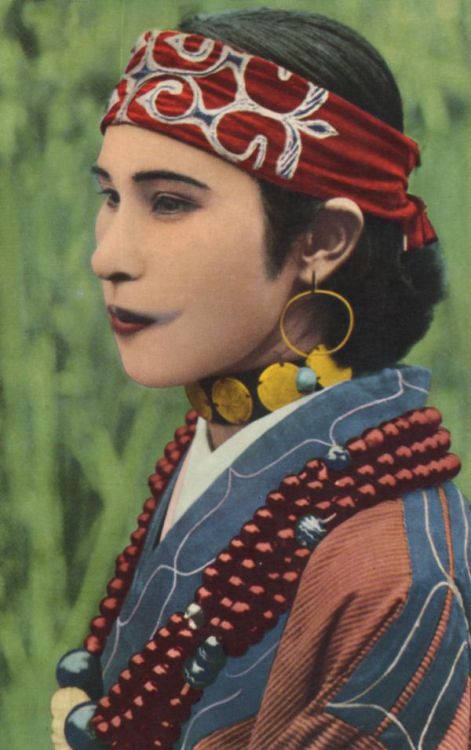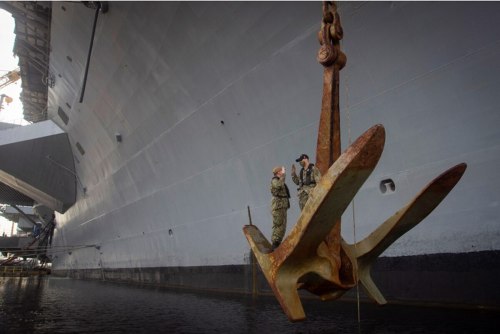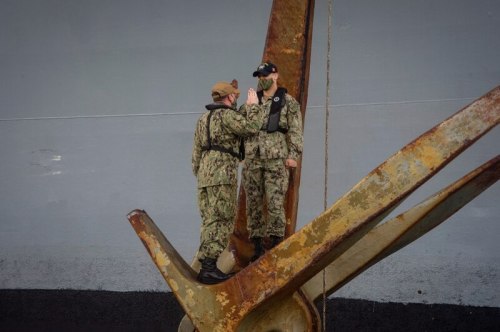#ceremonies
Just the victory parade to go, and then Britain’s summer of love will be over. London 2012, the capital’s greatest party in living memory, is done. At the risk of using up the entire annual quota of Guardian editorial schmaltz in one go, this past month it feels as if most of us have been (as Boris Johnson would have it) cropdusted with serotonin, the happiness hormone.
Read the Guardian’s editorial this morning on the Paralympics and Olympics summer of love.
Here’s the review of the closing ceremony from our Olympics editor Owen Gibson, and Jonathan Freedland looks back on the summer of 2012
Photograph: Michael Steele/Getty Images Europe
Post link
DISCOVER: the Ainu of Hokkaido
Living on the northernmost and southernmost islands of the country’s archipelago, two distinct cultures form Japan’s indigenous population. In the far south, tropical Okinawa is home to the Ryūkyūans, whilst snowy Hokkaido at Japan’s northern tip is Ainu territory.
The earliest settlers of northern Japan and Russia’s Sakhalin and Kuril Islands, you’d be forgiven for having never heard of the Ainu people. Official estimates place the Ainu population of Japan at 25,000 but Ainu culture remains largely unknown, even in Japan. In 2008 the Ainu were formally acknowledged by the Japanese government as “an indigenous people with a distinct language, religion and culture”. Today, Hokkaido’s native community continue to work hard to preserve their distinct heritage through traditional craft, language and cultural practices.
Read on for an introduction to the hidden people of Hokkaido.
Images: via tmurrayarts.com

Hunter Gatherers
The Ainu were traditionally hunter-gatherers. Hokkaido, known as Ainu Moshiri, or ‘land of the Ainu’ provided a bountiful landscape for hunting, foraging and fishing. Using bows, arrows and poisoned spears, the Ainu lived off the land until emigration of the Japanese from mainland Japan displaced the indigenous population, forcing them into agriculture.
Image:Laura Liverani via the Guardian
An Endangered Language
The language of the Ainu people is classed as a ‘language isolate’, meaning it is completely unique, unrelated to any other. Critically endangered, the number of native speakers is estimated at just 10, yet despite nearing extinction, there is a movement to revitalise the language and the number of second-language learners is increasing, particularly in Hokkaido. The Ainu language has had no indigenous system of writing, making the Ainu masters of narration. Using the classic Ainu language of the Yukar, or ‘epic stories’, tales were committed to memory and related at gatherings which often lasted many hours or even days.

Sacred Bears
The Ainu worship nature and practice animism – a belief in multiple spirits capable of helping or harming human interests. The Ainu believe that all animals are the manifestation of gods on earth, but whilst there are many gods in Ainu belief, the most important is known as Kim-un Kamuy – the god of bears and mountains. In Ainu culture the bear is considered sacred, informing their most important ritual known aslotame. Having treated the bear well in life, the Ainu believed that in death its spirit would ensure the wellbeing of the community.
Image: via kirokomade.com

Hair and Tattoos
One of the most distinctive physical features of the Ainu people were the men’s long hair and tattoos worn by the women around their mouths. Never shaving after a certain age, Ainu men kept thick beards and shoulder-length hair. A custom for facial tattoos signified the coming of age amongst Ainu women, using black soot to mark around their mouths, starting with a small dot on the upper lip which grew as a girl approached womanhood.
Image: Via BBC.com
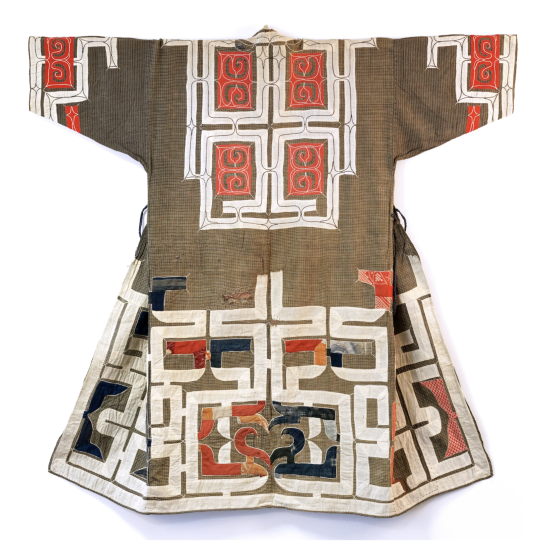
Clothing
Traditional Ainu clothing is made from Nibutani ‘bark cloth’, woven using attush – fibres spun from the inner bark of elm trees growing near the Saru River. Featuring distinctive applique patterns, kimono-style robes were made by Ainu women, each unique garment designed with the intended wearer in mind. Ornamental jewellery and headdresses are also key to traditional Ainu attire, most notably theSapanpe – a wooden crown featuring carvings of animal gods worn by men during important ceremonies.
Image: kimono via Helmn
Post link
Paige wore theBao Tranchi Velvet Trifecta Gownto the 2019 WWE Hall Of Fame Induction Ceremony on April 6th, 2019. This gown can be custom made for the price of $2,500.
Post link
Charly Caruso wore theHayley Paige Reznor Pompadour Pink Off-The-Shoulder Gownto the 2019 WWE Hall Of Fame Induction Ceremony on April 6th, 2019. Click the link to order or inquire about pricing.
Post link
Maryse carried theLouis Vuitton Petite Malle Monogram Handbagto the 2019 WWE Hall Of Fame Induction Ceremony on April 6th, 2019. Her bag can be purchased for $5,350.
- Worn with the Mac Duggal 66217D Gown
Post link
Stacy Keibler was seen wearing theDavid Koma Mirror Embellished Cut-Out Gownat the 2019 WWE Hall Of Fame Induction Ceremony on April 6th, 2019. This gown is currently being sold for $2,603.
Post link
Billie Kay wore a pair of theAldo Arelisen Pumps in Blackto the 2019 WWE Hall Of Fame Induction Ceremony on April 6th, 2019. Unfortunately, these pumps are no longer available.
- Worn with the Abyss by Abby Attention Gown in Black
Post link
Billie Kay wore theAbyss By Abby Attention Gown in Blackto the 2019 WWE Hall Of Fame Ceremony on April 6th, 2019. This gown is available for $275.
- Worn with the Aldo Arelisen Pumps in Black
Post link
Peyton Royce wore theHouse Of CB Ayelen Black Duchess One Shouldered Mini Dressto the 2019 WWE Hall Of Fame Induction Ceremony. This dress can be purchased for $195.
Post link
Michelle McCool wore theDundas Camouflage and Leopard-Lace Sequinned Mini Dressto the 2019 WWE Hall Of Fame Induction Ceremony. Her dress can be purchased for $838.
Post link
Mandy Rose wore a pair of theChristian Louboutin Choca Platform Sandal in Gold to the 2019 WWE Hall Of Fame Induction Ceremony on April 6th, 2019. These sandals are now sold out.
- Worn with theWalter Collection Madison Jumpsuit
Post link
Mandy Rose wore the Walter Collection Madison Jumpsuit to the 2019 WWE Hall Of Fame Ceremony on April 6th, 2019. Her jumpsuit is available $5,995.
- Worn with the Christian Louboutin Choca Platform Sandals
Post link
Charlotte Flair was seen wearing theChristian Siriano Colour Block Halterneck Dressat the 2019 WWE Hall Of Fame Induction Ceremony on April 6th, 2019. Her dress is no longer available.
Post link
Carmella wore the Walter Collection Blair Gownto the 2019 WWE Hall Of Fame Induction Ceremony on April 6th, 2019. Her gown is available for $1,995.
Post link
Torrie Wilson was seen wearing the Jovani 60283 Dress in Red during her WWE Hall Of Fame Induction Ceremony on April 6th, 2019. Her dress can be purchased for $590.
Post link
BIG anchors….
NORFOLK NAVAL SHIPYARD,VIRGINIA (October 22, 2020) – Master-at-Arms (law enforcement)1st Class Brian Dunne, USN (left) is reenlisted for a few more years of Naval service by LTJG Asa Calloway, USN, on the starboard anchor of United States Navy nuclear-powered aircraft carrier USSHarry S. Truman (CVN 75).
Operational conditions permitting, Sailors are allowed to pick their “spot” for traditional reenlistment ceremonies. Normally, the location maintains a special meaning or significance for the Sailor extending his or her contract with the Navy.

This is how they got out to the perch on the anchor.
That anchor looks a bit beaten-up right now only because the aircraft carrier is in the shipyard for an extensive maintenance period between overseas deployments. That anchor will be gleaming again soon….

USS Harry S. Truman (CVN 75)
_________________________
>>Top four photos: Mass Communication SpecialistSeaman Bela Chambers, USN
>>Note: A couple more examples of some of the unusual places Sailors pick for their reenlistment ceremonies….
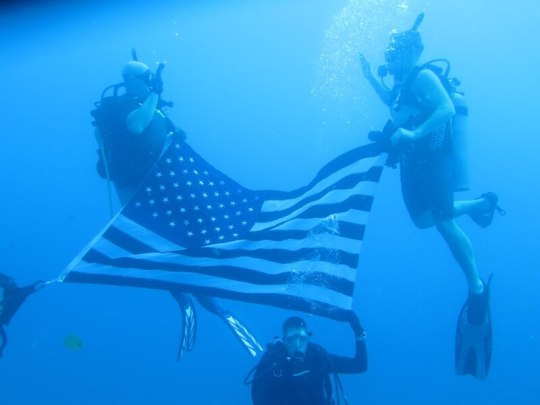
Ninety feet (27 meters) under the Pacific Ocean near Hawaii.

At the North Pole when your submarine makes a stop there.
Post link
The names by which mysteries or mystic festivals were designated in Greece. Mysteries in general may be defined as sacrifices and ceremonies which took place at night or in secret within some sanctuary, which the uninitiated were not allowed to enter. What was essential to them, were objects of worship, sacred utensils, and traditions with their interpretation, which were withheld from all persons not initiated.



